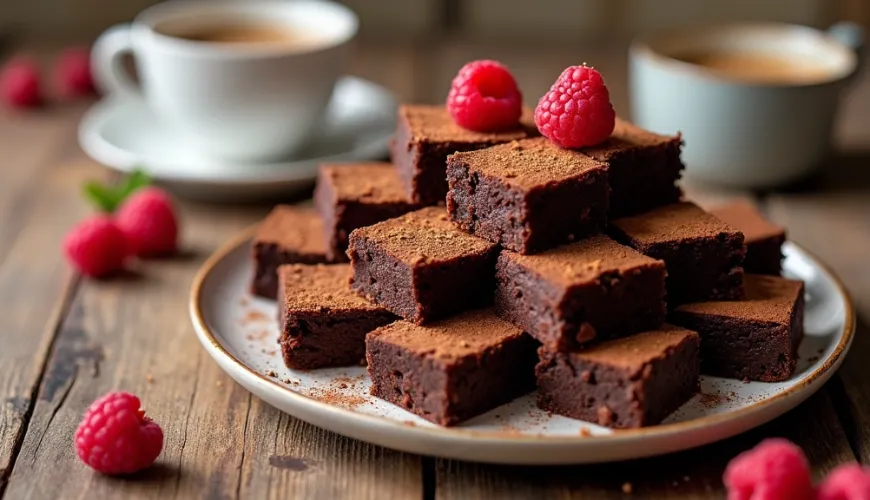
Start with a delicious chimichurri recipe and surprise your guests

Chimichurri - the Green Star from Argentina that Charms Even Czech Cuisine
When it comes to Argentine cuisine, most people think of juicy steaks, grilled meat, and a passion for good food. But few know that behind that perfect taste experience often stands an inconspicuous yet indispensable accompaniment – chimichurri sauce. This simple yet flavorful mix of fresh herbs, garlic, olive oil, and vinegar can transform any dish into something extraordinary. And the best part? Anyone can make it at home.
Chimichurri originates from Argentine cuisine, where it holds a similar place to garlic spread or mustard in Czech cuisine. It's not a sauce in the traditional sense – it's more of an herb salsa served cold and used as a marinade or condiment for grilled meat. Although every family has its own chimichurri recipe, the basic ingredients remain the same: fresh parsley, garlic, vinegar, olive oil, salt, and chili.
Chimichurri Recipe Step by Step
Although there are countless variations, the basic chimichurri salsa recipe is simple and requires no exotic ingredients. Just a few minutes and a handful of quality ingredients.
Ingredients:
- 1 bunch of flat-leaf parsley
- 4 cloves of garlic
- 2 tablespoons of red wine vinegar (or lemon juice)
- 1 teaspoon of dried oregano
- 1/2 teaspoon of dried chili flakes (to taste)
- 1/2 teaspoon of salt
- freshly ground pepper to taste
- 100 ml of quality extra virgin olive oil
Instructions:
- Finely chop the parsley – by hand with a knife, not in a blender. This will retain its freshness and characteristic texture.
- Add finely chopped garlic, vinegar, oregano, chili, salt, and pepper. Mix everything thoroughly.
- Pour olive oil over the mixture and let it sit for at least 30 minutes, ideally a few hours.
The result is a vibrant, aromatic sauce that tastes just as good with a beef steak as it does with tofu or roasted potatoes. It also complements grilled vegetable skewers, fish, or chicken perfectly. In summer, it becomes a staple of every barbecue, while in winter, it adds freshness to roasted dishes and salads.
Interestingly, in some parts of South America, there is also a red variant called "chimichurri rojo," which includes paprika or tomato puree – you can adapt the recipe to your taste in this style.
The Secret to Perfect Flavor
At first glance, it may seem like just an ordinary mix of green herbs, but the proportions and freshness of the ingredients play a key role. Olive oil should be of high quality, cold-pressed, as it forms the base of the whole structure. Vinegar determines the acidity and gives the salsa a "kick" that elevates the other flavors. And garlic? It provides the typical, slightly pungent finish.
Experienced cooks recommend letting the chimichurri rest – ideally overnight in the fridge. This allows the flavors to beautifully develop and meld. And if you have leftovers? It lasts up to a week in the fridge and often tastes even better the next day than freshly made.
Did you know that chimichurri sauce is often used as a marinade before grilling in Argentina? The meat is marinated in the sauce for several hours or overnight, which beautifully perfumes and tenderizes it. The marinade then serves as the final seasoning after cooking.
Where to Use It? Utilizing Chimichurri in Czech Cuisine
You might be wondering – this sounds great, but where to actually use it in the kitchen? Recipes with chimichurri don't have to end at the grill. Quite the opposite, this salsa is surprisingly versatile. Just a bit of imagination.
Imagine roasted pumpkin scented with rosemary, with a spoonful of chimichurri beside it. Or creamy risotto with parmesan, topped with a green drizzle. In summer, you can prepare a mixed salad with quinoa, tomatoes, and cucumber – and chimichurri will transform it into something you could enjoy in Buenos Aires.
An interesting example comes from chef Klára, who runs a bistro with a focus on sustainable cooking: "When we first made our version of potato salad with chimichurri and toasted seeds, people asked if this was really potato salad. And then they came back for more. It's simple, yet different."
Chimichurri and a Healthy Lifestyle
Aside from being irresistibly tasty, this sauce has another strong point – it's surprisingly healthy and nutritious. Fresh parsley is packed with vitamin C, antioxidants, and iron. Garlic has antibacterial properties and supports immunity. And olive oil? It's known for its positive effects on the heart and blood vessels.
In a time when many people are trying to eat less meat, more plant-based foods, and overall healthier, chimichurri becomes a welcome addition to the menu. It pairs excellently with plant-based meat alternatives or in various vegetable bowls. Moreover, it contains no added sugars or preservatives – making it ideal for those who care about the composition of their food.
For those trying to reduce salt or fat intake, there is even a "light" version – simply use less oil and more vinegar, or replace some of the oil with water.
A Little Trick at the End
Whichever chimichurri salsa recipe you choose, always remember that the flavor should be balanced – fresh, slightly acidic, spicy, but not overly so. If you want to mellow the sauce, add a bit of honey. For an extra aromatic experience, try a combination of parsley with cilantro or mint. Creativity knows no bounds.
So whether you decide to complement grilled portobello, marinate homemade tofu, or simply season roasted sweet potatoes, chimichurri sauce will open the door to a world of simple, healthy, and delicious cuisine. And you might find you don't want to be without it in your fridge.

